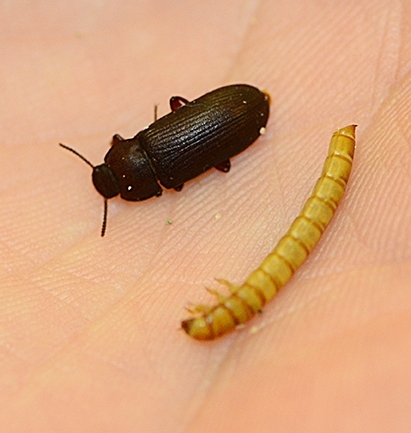
And if you attended the UC Davis Bohart Museum of Entomology open house on Dec. 5, 2015, you may have seen entomology student Wade Spencer showing visitors the larvae devouring his Styrofoam bicycle helmet.
And if you've been following the news from Environmental Protection Agency (EPA), you may have heard about the UC Davis doctoral student who just received a $15,000 grant in EPA's National Student Design Competition for Sustainability Focusing on People Prosperity and the Planet (P3).
That would be Trevor Fowles, a second-year doctoral student in the UC Davis Department of Entomology and Nematology, who submitted his research project, “Beetle Larvae as Biodegraders of Styrofoam and Organic Waste.” He now has an opportunity to score a $75,000 grant in Phase 2 of the competition. He'll be in Washington DC April 7-8 for the National Sustainable Design Expo at the Science and Engineering Festival.
Meanwhile, his 100,000 mealworms in the Briggs Hall lab of his major professor Christian Nansen, are munching up a storm (well, a blizzard of the white stuff) in a project that Fowles hopes will make a difference in breaking down Styrofoam--especially a problem in the nation's landfills--and offer sustainable environmental solutions.
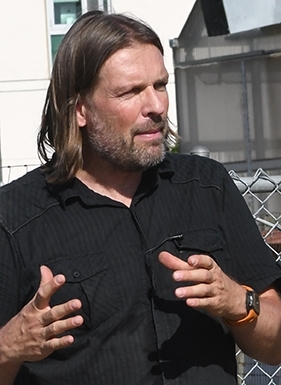
“It's about insects processing waste,” Fowles said of his research. “In three weeks they ate three-fourths of a pound of styrofoam, converting it into biodegradable waste.”
“Trevor's project should be viewed as an example of what entomological agricultural research is all about in the 21st Century--developing new and highly innovative ways to recycle resources and more sustainable food production systems," said agricultural entomologist Christian Nansen, an associate professor of entomology who specializes in applied insect ecology, integrated pest management (IPM) and remote sensing. In addition, the project has an applied evolutionary angle, which Fowles intends to explore.
"Our plan is to selectively breed insects and their microbial gut biome, so that they become highly adapted to breakdown, not only Styrofoam, but also different kinds of agricultural waste products," Nansen said. "Similar to orchard growers bringing in bee hives during flowering periods for pollination, we envision that, in the future, companies will be able to order strains of insects for biodegradation of specific wastes. That is, the future of applied entomology will in different ways be about identifying and developing ways for insects to provide different societal services, including pollination, biological control, and biodegradation."
The UC Davis research project involves designing a pilot-scale styrofoam biodegradation unit to take in regional Styrofoam and organic waste, and establish a high-performance beetle lineage, or the “best beetle larvae to do the job.” The adult beetles also eat Styrofoam, but not as much.
“Organization of our food systems will be a defining challenge in the upcoming century and I believe insects will play a significant role in transforming our agricultural sectors,” Fowles said.
The design emphasizes economic feasibility, community engagement, and environmental stewardship. To be sustainable, the project is aimed at connecting local community stakeholders with research expertise to produce an ecofriendly alternative for Styrofoam disposal.
After biodegrading the Styrofoam, the beetles can be pelletized for animal feed, Fowles said, and the excrement or frass can be used as “high-value amendment to compost mixtures.” He figures that that since Styrofoam by itself is a poor nutrient source for the beetle larvae, he eventually will mix it with organic waste materials, such as, pulp from wine and tomato industries, to optimize beetle development.
The darkling beetles and larvae are pests of stored grains, but the larvae are widely used throughout the world as food for humans; for captive pets, including fish, reptiles and birds; and as fish bait. They are reared commercially on fresh oats, wheat bran or grain, and often with sliced potato, carrots, or apple as a moisture source.
In the wild, darkling beetles and larvae are general decomposers, eating decaying leaves, sticks, grasses, and carcasses.
Fowles said he received his first colony of mealworms in 2016 from then graduate student Tom Nguyen at the Bohart Museum of Entomology (Nguyen is now a researcher at the Smithsonian Institution). Fowles purchased his 100,000 mealworms from the insect farm, Rainbow Mealworms and Crickets in Compton.
Fowles, who grew up in West Sacramento, received his bachelor's degree in biology in 2011 from San Diego State University. Before entering the UC Davis graduate student program, he served as a lab manager for five years for Carroll/Loye Biological Research, launched by the UC Davis entomological team of Scott Carroll and Jenella Loye.
In a news release, EPA Administrator Scott Pruitt said: “This year's P3 teams are applying their classroom learning to create valuable, cutting-edge technologies. This next generation of scientists is designing sustainable solutions that will help protect public health and the environment and ensure America continues to lead the world in innovation and science for decades to come.”
Fowles obtained his first colony of mealworms in 2016 from then graduate student Tom Nguyen at the Bohart Museum of Entomology, now a researcher at the Smithsonian Institution. Fowles purchased his 100,000 mealworms from the insect farm, Rainbow Mealworms and Crickets in Compton.
The project in the Christian Nansen lab is all good news for the environment. Who would have thought that beetle larvae would chow down on Styrofoam, the stuff that fills our landfills and what holds our coffee and take-out orders?
Stanford researchers say that every year we Americans throw away 2.5 billion plastic foam cups alone. And that's just a fraction of the 33 million tons of plastic that Americans discard every year. Another statistic: less than 10 percent of that total gets recycled. And as a Stanford news release indicated "the remainder presents challenges ranging from water contamination to animal poisoning."
Bring on the high-performance UC Davis beetles!
Attached Images:
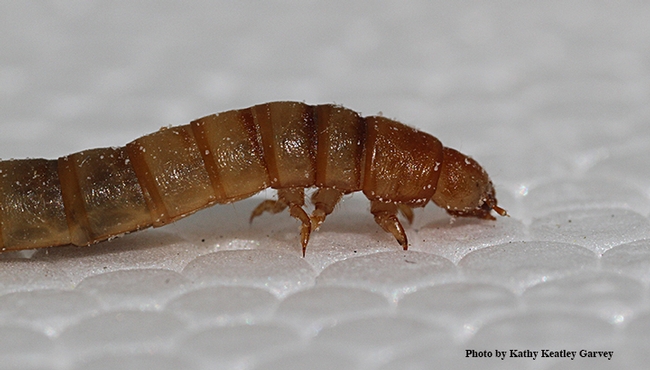
Close-up of a mealworm on Styrofoam. This image was taken with a Canon MPE-65 mm lens. (Photo by Kathy Keatley Garvey)
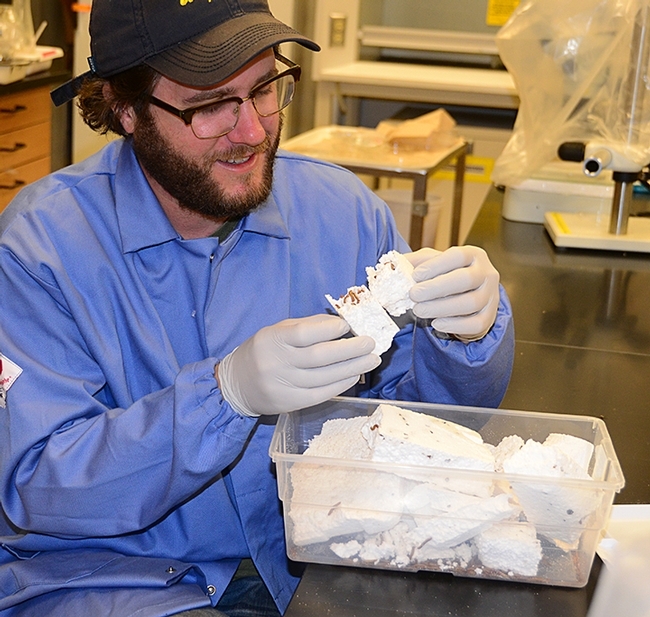
Trevor Fowles, a second-year doctoral student in the UC Davis Department of Entomology and Nematology, with his mealworms. (Photo by Kathy Keatley Garvey)
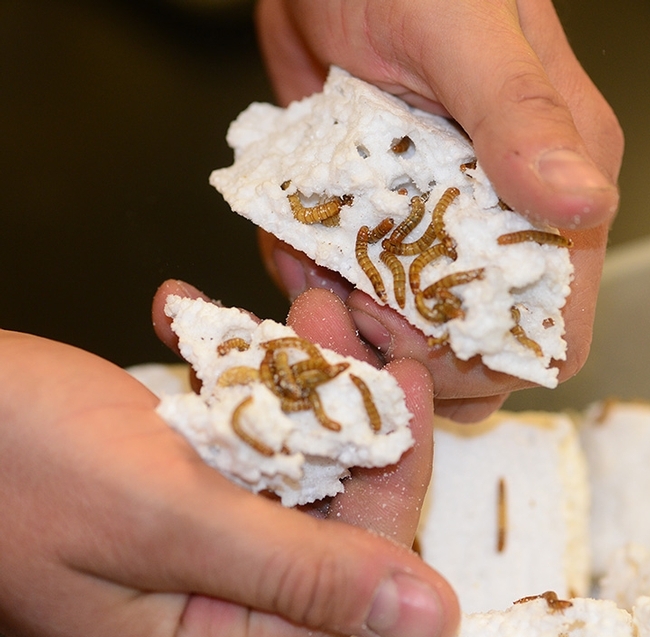
Mealworms eating Styrofoam in the Christian Nansen lab at UC Davis. (Photo by Kathy Keatley Garvey)